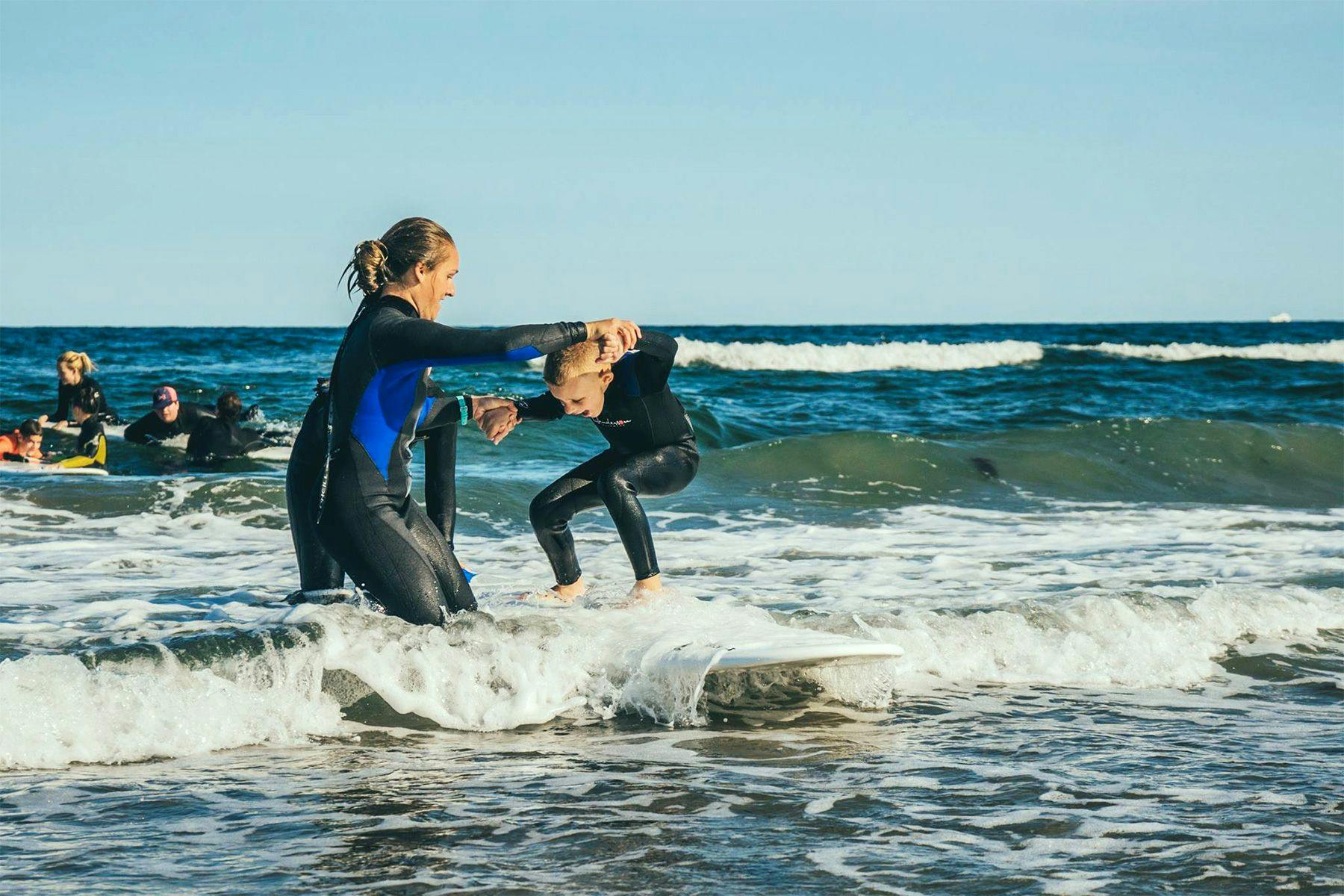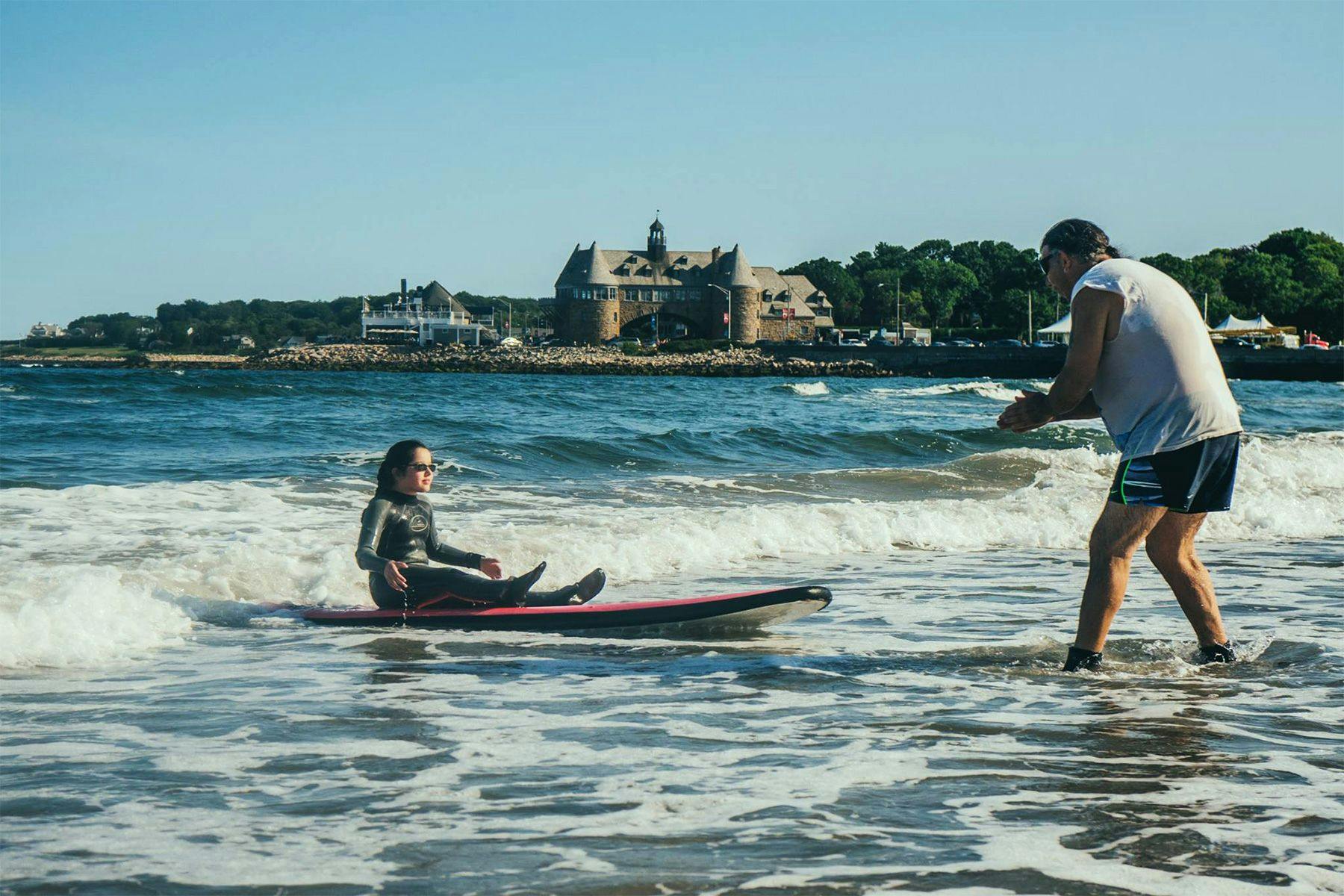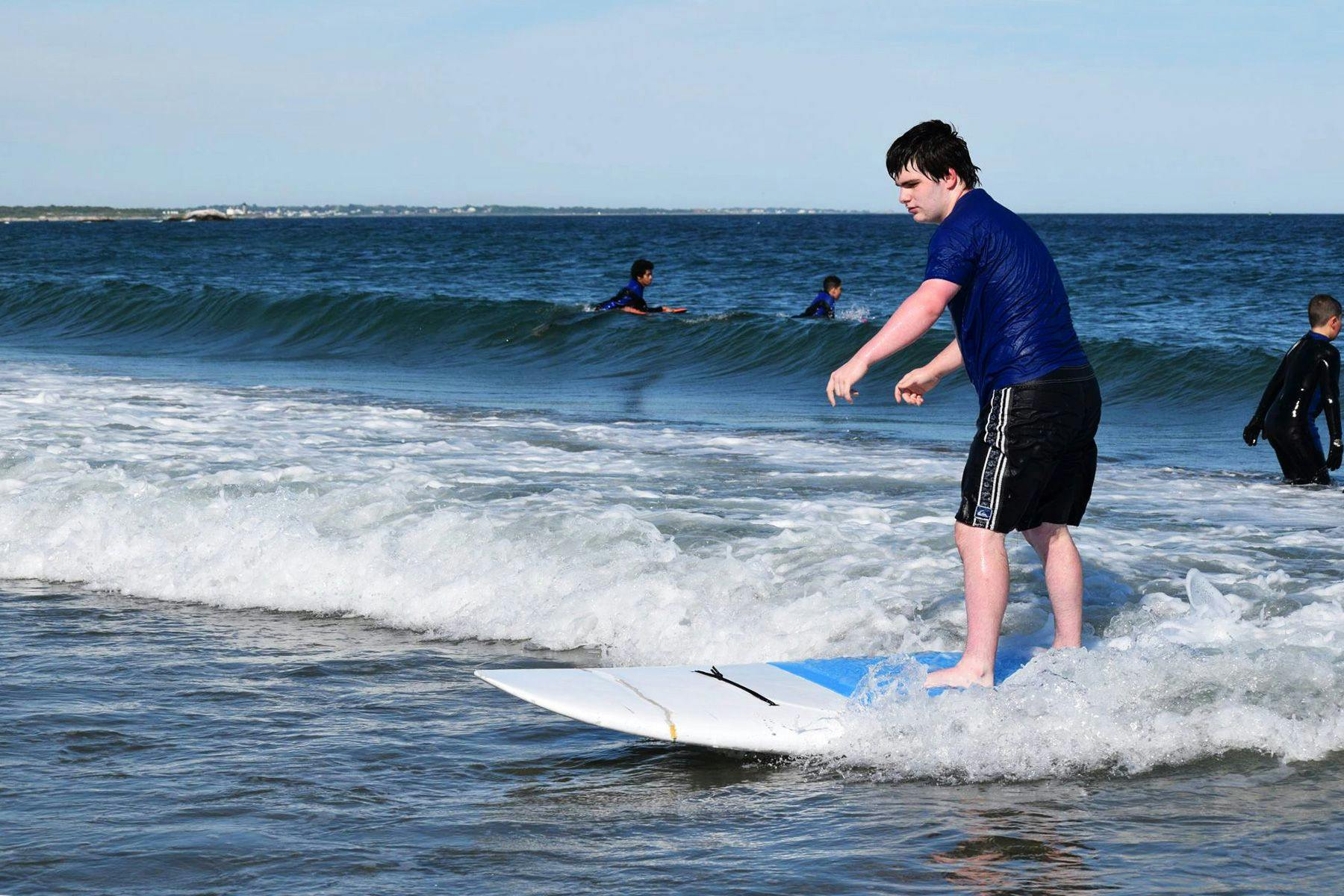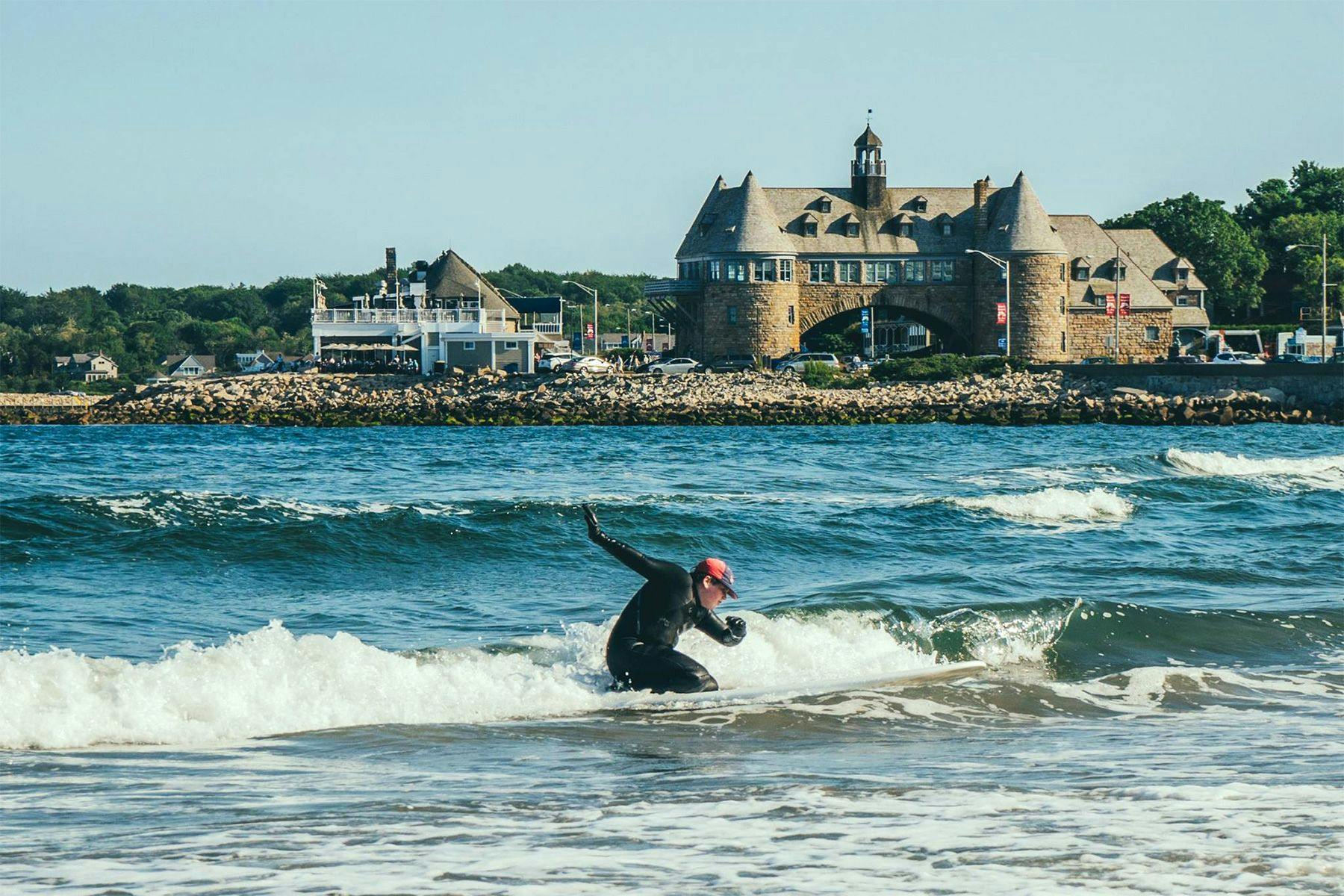Community ProjectsLet All Children Go Surfing

Surfing As Therapy For Children With Disabilities
Be it physically, psychologically, or spiritually, each and all of us adults are aware, even if only to a minor extent, of the benefits that surfing and the ocean bring to our lives. Much the same – if not more acute – are the benefits that ocean playtime and wave-riding can bring to children, whose blooming, sponge-like brains sensitises and absorbs external influences in an almost unobstructed manner. Among youngsters, those who have disabilities (an average of 5% of school-aged children in the United States) are the ones who face the biggest challenges when trying to meet the recommended daily 60-minutes of moderate-to-vigorous physical activity that is supposed to promote healthy development. It is members of this group however, for whom the benefits of engaging in an activity such as riding waves can have an even greater impact.

A holistic practice, surfing has the potential to not only bring psychological benefits to children who might not be able to access them otherwise via participation in a recreational activity in a natural environment such as the sea, but also to work towards improving their fitness levels (muscular and cardiorespiratory endurance, core and upper body muscular strength, etc.) and overall physical health, so as to avoid possible health complications such as obesity and other related diseases. Such health issues are three times more likely to occur among children with sensory, intellectual and physical disabilities because of the issues that they face exercising on a regular basis. The weightlessness experienced when being in the water enables many children to walk for the first time unassisted, not only strengthening the muscles used when walking on land but also stimulating awareness of their own body, enhancing breath control and increasing their self-esteem – all of which further incentivise their rehabilitation process.
Also, being a rule-free, individual sport underpinned by repetition and highly reliant on determination and stamina in order to progress, surfing allows many youngsters who might have had difficulty fitting into a team-sport environment to find an activity where they can still engage in the social context. Nonetheless, the fact that children with disabilities require more structured programmes and the general lack of inclusive initiatives often proves to be a great challenge for families who seek to engage their disabled children in any sort of fitness or activity programmes.
As a means to turn the tables and potentially create a framework for such initiatives to develop further, Emily D. Clapham, an avid surfer and associate professor of Kinesiology at the University of Rhode Island, observed the calming effects surfing had on her and decided to explore it further through her profession. In 2014, she embarked on a journey with her URI colleagues to research and develop a programme that uses surfing as therapy for children with disabilities – which was recently reassessed in a paper published earlier this year.

Running annually since 2012 as eight week-long interventions during summertime, the programme has given the opportunity for children between the ages of 5 and 18 years old who have been diagnosed with a developmental, sensory and/or physical disability (such as intellectual and learning disabilities, down syndrome, several autism spectrum disorders, microcephaly, global developmental delays, dandy-walker syndrome, heart defects, and hypothyroidism) to experience surfing in a safe environment. Assisted by trained instructors and Kinesiology and Physical Therapy students from URI, as well as a parent or guardian, the children visit a public beach in Rhode Island twice per week for 60-minute surf sessions. In these sessions they are guided through the basic steps of learning how to ride a wave – from paddling and balancing on a surfboard to learning how to catch a wave on their stomach and ultimately standing, through paddling back out by themselves – in the hope of improving their strength, flexibility, range of motion, coordination, balance, and psychosocial development.
After an initial group practice, lessons are deliverd one-on-one, with volunteer instructors setting individual goals to their assigned child according to his or her optimal learning pace and style, using cue words, sign language, pictures and communication boards to facilitate both participation and progression. Measurements in physical changes are done before, during and after the programme with the use of heart rate and activity monitors, as well as the Brockport Physical Fitness Test.

Beyond physical changes, potential psychosocial improvements in participants, such as increased enthusiasm, confidence and verbalisation are examined by surf instructors, programme leaders, and parents. On a follow-up paper published in 2017 by Emily, Adam M. Moore, and Theresa A. Deeney, also from URI, parents were invited to share their perceptions of the effects the therapeutic surf programme has had on their children.
“One of her physical therapist’s goals was for her to be walking on uneven surfaces, and the ocean and the beach are perfect for . So, that was one of our goals – stability, like her knowing how her body works in space, and that walking through the water is different from walking on a smooth path somewhere… Tuesday night, we got home from something and she walked up the stairs. She had stuff in her hands. She walked up our front stairs – It’s only three or four steps – but without holding the rail, without holding my hand, and holding onto her stuff. So that whole sense of self and space and the balance, I think it’s improved greatly.”
– Laura, parent of 17-year-old Carrie, who has Down syndrome
“It’s really given him some self-confidence to get out there – it wasn’t many years ago that he’d say, ‘Oh, I can’t do that, I can’t do this, I can’t do that.’…and now he seems more enthusiastic to try different things and get out there and try it rather than just saying no… I think this has really boosted his confidence for being physically active.”
– Pamela, on her high-school-age son with microcephaly

“It happened during the 8-week period. It was like, there was this big explosion of activity in her brain. Her speech continued to get more elaborate. She’s pretty much talking non-stop now.”
– Kelsey, parent of Janet, age 8 who has multiple disabilities
With eight of the 17 children who partook on the first experiment back in 2014 going on to compete in the Rhode Island Special Olympics State Games, and another three of them participating in the Unified Sports through Special Olympics, it becomes even clearer that not only is the potential for surfing to better lives indisputable, but that children – regardless of any impairment – should sit high on the line-up. After all, they are the future.
* Grant funding for the 2014 programme was obtained from the University of Rhode Island’s College of Human Science and Services ($5,000) and from the Fogarty Foundation($4,000), as well as a 50% discount on equipment rentals from Peter Pan Surf Academy. Despite the on-going success of this and other related programmes, financial support remains the ultimate challenge for such initiatives to take off.